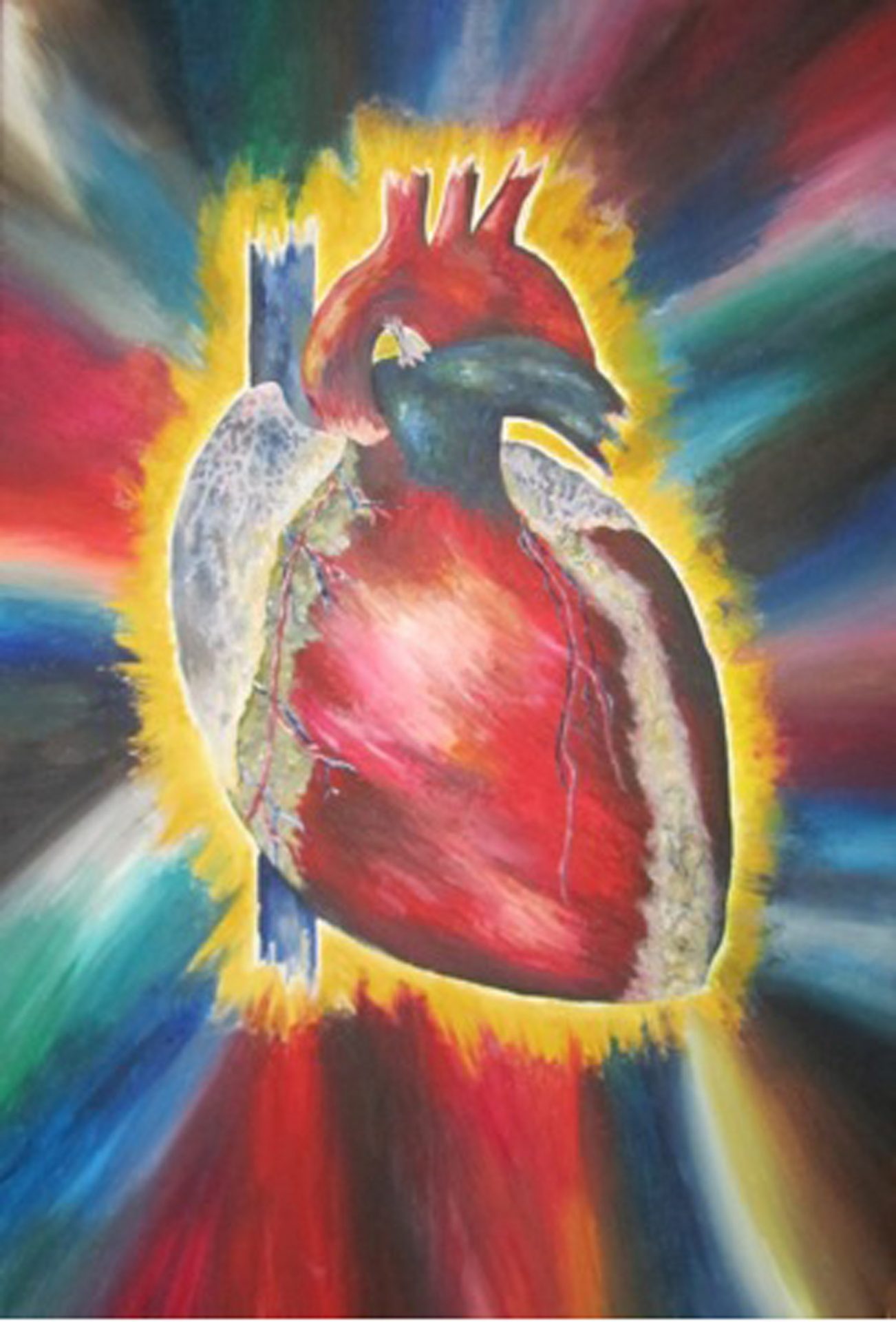The Heart of the Matter
Our stories are shaped by others’ stories… There was a particular painting by a patient* that consistently caught my eye. It was of a small, dark explosion in the corner with radiating hues of blues, yellows and browns that appeared to signify life going on around the little outburst, which was the patient themselves. I took inspiration from this painting so that I was, in a way connecting with them. Even though I have never met them, I feel as though their painting gives me just the slightest of insights into their life, and I respect them immensely for being willing to try to express their situation, and allowing me to have just the smallest of peeks into their experiences of life.
For me, I feel like this painting can communicate how I feel towards my future patients; that we are equal people in this life, and that the things that affect their heart will affect their storytelling, and I hope to remember to make the time to listen for the clues to these things. The gravity and emotion of that patient’s piece really struck a chord with me, and I realised how each person perceives everything in a totally different way to the person next to them. I believe that every person is in this world to contribute something and that that contribution is invaluable. I hope that the importance that I place on people as individuals, will come across with all whom I meet – including my future patients – and that I may be able to give them just the slightest of glimmer of hope that they are not just a small, explosion in the corner of the page that is their life; but rather that they are valued and important people in their own right.
Upon first sitting down, paintbrush in hand, I was utterly bewildered. I knew, in the back of my mind, that I was desperate to portray the situations that underpin a patient’s situation, and that I wanted to use the anatomical heart, somewhere in my creative piece. The heart itself was relatively quick to paint, because it was a matter of making it scientifically accurate, copying the vessels and chambers of the heart from a book. In contrast, I struggled with the undefined and open-ended nature of one’s life experiences and emotions that are symbolised by the colourful background. In retrospect, perhaps this is characteristic of a typical medic’s approach to medicine: the science, that is distinctly defined in text books is safe ground to cross, whilst experimenting with the art of humans and their life story, is much more uncertain and challenging.
I hope that others will see it and wonder about the story behind it, as I did with that patient’s painting of their little explosion in the corner. I would love to hear what interpretations there are of it, and I hope they will be able to see where the concept that I am trying to portray has arisen from: that there is a story that cannot be explained by science, that supports our journey through life. I would be interested to hear the views of an old-fashioned, scientific doctor, about their opinions on my painting’s message about the importance of hearing the patients’ story in the depth that we have discussed in the creative arts sessions.
Each person finds their own way to communicate with those around them. In treating a patient we must appeal to the different colours and shapes that are in the background of their heart; whether they love art, have a passion for music, are silent but brilliant writers, enjoy talking and interaction with people. The use of creative arts within the medical and traditionally scientific backdrop is questionably (but to me, undoubtedly) crucial in medical practice. Not every patient that walks through a doctor’s door will be able to articulate each life experience that has led to their current state; some will not even know that the deep rooted cause exists. For those people who want help in understanding the origins of their desperate situation, prescriptions and hospital appointments will only stretch so far. Doctors need to know that this range of therapies exist, they need to use them, and they need to understand that patients need to know why they are feeling a certain way. Ultimately, they need to protect people’s hearts.
*Extract from an extended assignment inspired by patient-artist work shared in a group session.

0 Comments